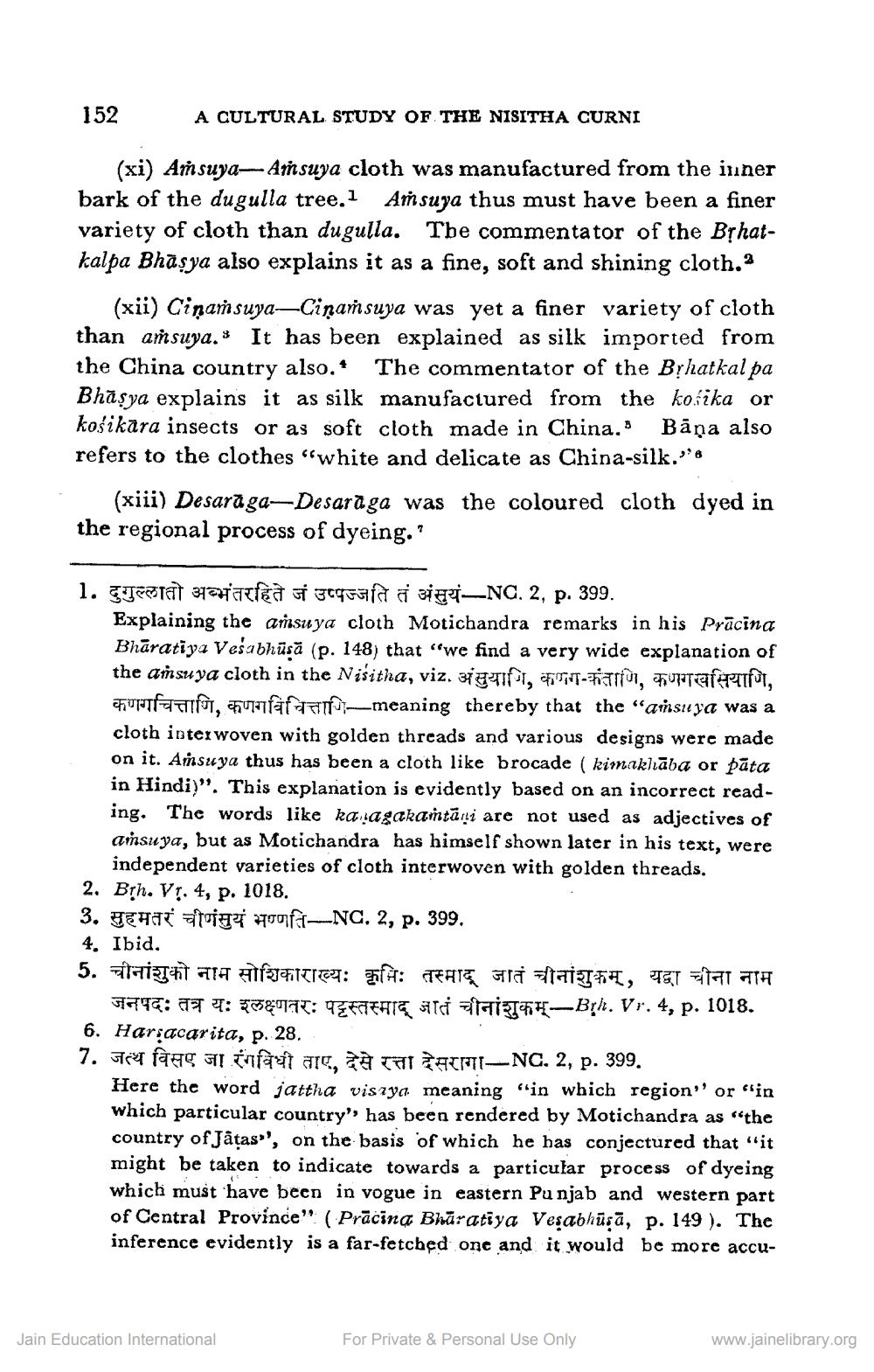________________
152
A CULTURAL STUDY OF THE NISITHA CURNI
(xi) Aṁsuya-Amsuya cloth was manufactured from the inner bark of the dugulla tree.1 Añsuya thus must have been a finer variety of cloth than dugulla. The commentator of the BỊhatkalpa Bhāsya also explains it as a fine, soft and shining cloth.
(xii) Cinar suya-Cinaṁ suya was yet a finer variety of cloth than amsuya.' It has been explained as silk imported from the China country also. The commentator of the BỊhatkal pa Bhāșya explains it as silk manufactured from the koíēka or košikara insects or as soft cloth made in China.' Bāņa also refers to the clothes "white and delicate as China-silk."8
(xiii) Desaraga–Desarāga was the coloured cloth dyed in the regional process of dyeing.'
1. guesta taratie of 3695afa d sini-NC. 2, p. 399.
Explaining the ansu ya cloth Motichandra remarks in his Prācina Bhāratiya Vešabhūsā (p. 148) that we find a very wide explanation of the aṁsuya cloth in the Nišitha, viz. ziatifit, fi Ciri-piriù, furario, FURTTITUT, Ufar Fil meaning thereby that the “amsuya was a cloth interwoven with golden threads and various designs were made on it. Ansuya thus has been a cloth like brocade ( kimaklāba or pāta in Hindi)”. This explanation is evidently based on an incorrect reading. The words like ka agakantāni are not used as adjectives of ańsuya, but as Motichandra has himself shown later in his text, were
independent varieties of cloth interwoven with golden threads. 2. Bịh. V!. 4, p. 1018. 3. Jcha atriuri offNC. 2, p. 399. 4. Ibid. 5. चीनांशुको नाम सोशिकाराख्यः कृभिः तस्माद् जातं चीनांशुकम् , यद्वा चीना नाम
77777: ITT: SEMIT: EFATHIT TITAHBih. Vr. 4, p. 1018. 6. Harsacarita, p. 28. 7. Frit fat trifaut arc, aÀ TOTI ACHI-NC. 2, p. 399.
Here the word jattha viszya meaning "in which region” or "in which particular country', has been rendered by Motichandra as the country of Jātas'', on the basis of which he has conjectured that "it might be taken to indicate towards a particular process of dyeing which must have been in vogue in eastern Punjab and western part of Central Province" (Prācina Bharatiya Vesabhūrā, p. 149 ). The inference evidently is a far-fetched one and it would be more accu
Jain Education International
For Private & Personal Use Only
www.jainelibrary.org




